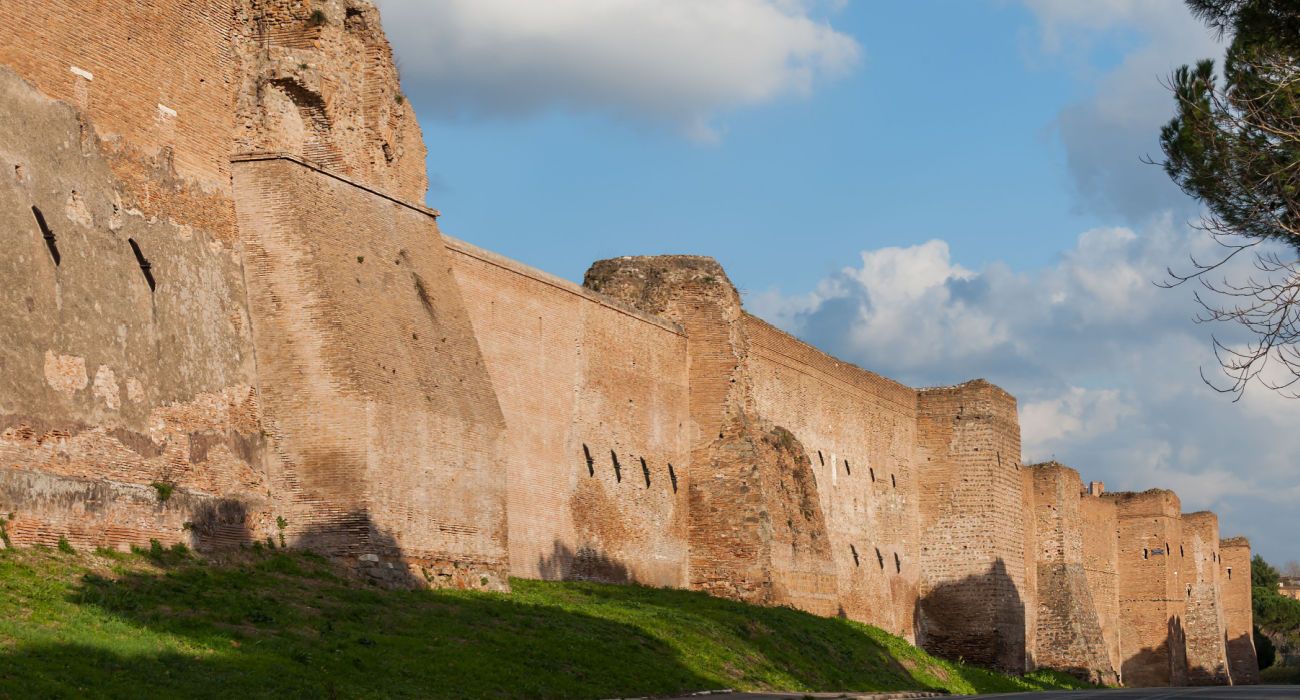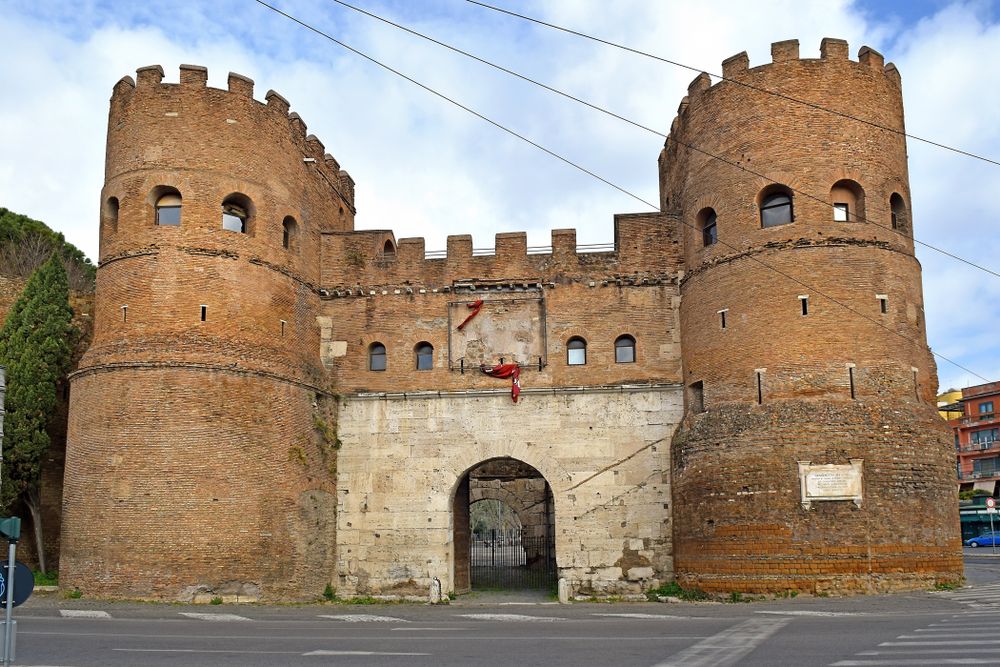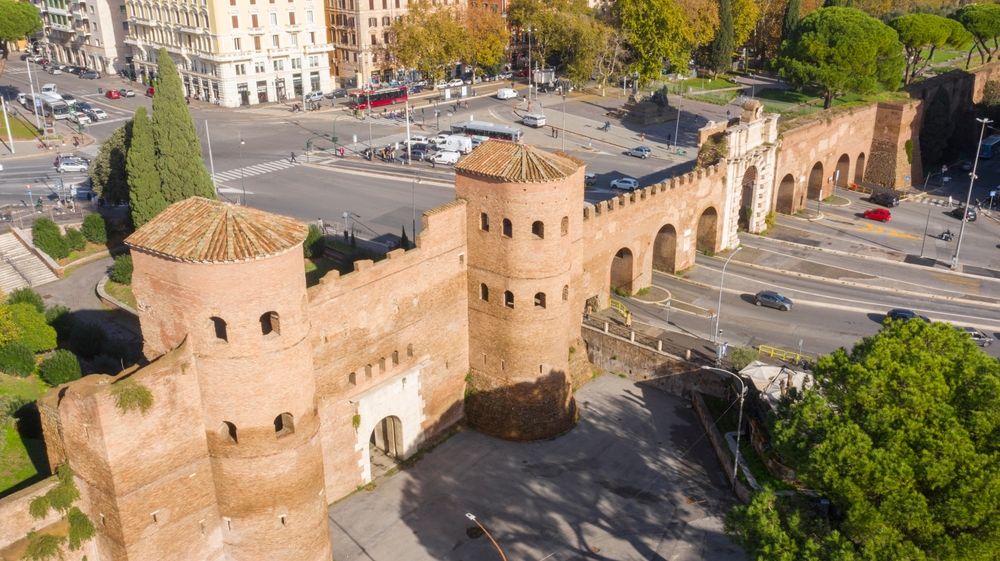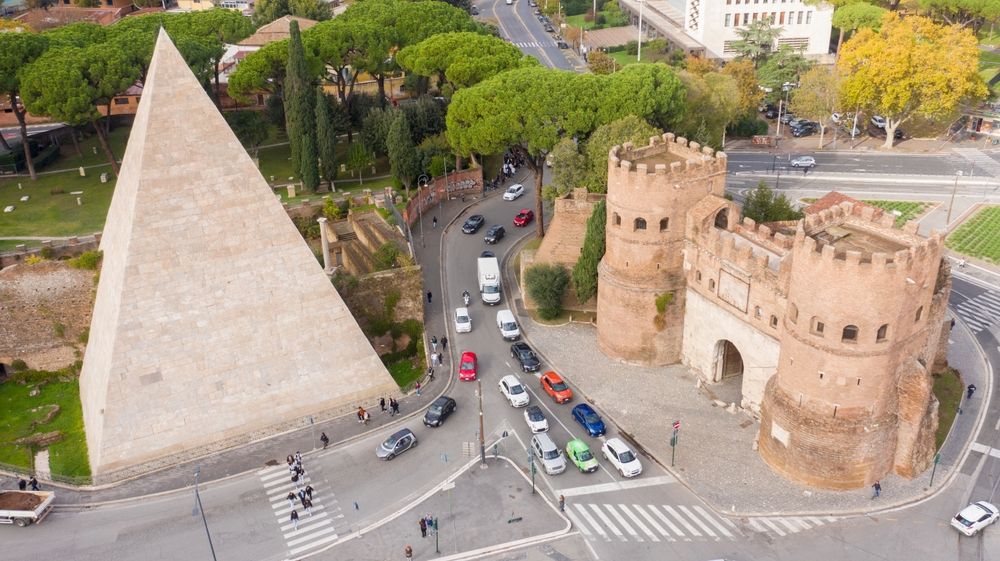Quick Links
Rome was the heart of the mighty empire and is today home to many of the most stunning Roman ruins, from the mighty Colosseum to more bizarre attractions like the Mount of Truth. Another of the top attractions in Rome is the ancient Aurelian Walls, built to defend the Eternal City.
The most complete Roman city walls in the world today are not in Italy but are the mostly intact city walls of Lugo in Spain. The most famous Roman city walls still standing today are probably the once formidable Theodosian Walls of Constantinople that visitors can still see in Istanbul today.
The History Of The Walls Of Home: How The Aurelian Walls Signaled The Changing Fortunes Of Rome
The Aurelian Walls were built between 271 AD and 275 AD, unsurprisingly during the reign of Roman Emperor Aurelian. It enclosed the seven hills of Rome and protected an area of around 3,500 acres of the city's approximately 6,000 acres of the urban area. The construction of the Aurelian Walls heralded the changing times of the Empire.
On the one hand, larger walls were needed, as the city had far outgrown the old Servian Wall.
- Built: From 271 AD to 275 AD
On the other hand, the walls signaled the times had changed. For a long time, the Romans had taken pride in that their capital city was so secure that it didn't need defensive walls during the Pax Romana. With the Crisis of the 3rd Century, the Empire nearly fell apart, and its borders were being breached by Germanic tribes, which the Roman Army struggled to contain. In 270 AD Northern Italy was plundered by barbarian invaders after defeating a Roman army (although they were driven out soon after). It had become clear that the Eternal City was no longer as safe as people had thought it to be.
The wall was built by the citizens of Rome as the Empire, hard-pressed by threats, could not spear any of its legionaries for its construction. It wasn't until around 135 years later, in 410 AD, that the walls were breached by the Visigoths as the now Western Roman Empire fell into decline.
While ultimately, the walls did not prevent the fall of Rome, they did continue to provide some protection to the city long after the Western Roman Empire had disappeared. They successfully defended Rome against an Arab raid in 846. They weren't fully made obsolete until 1870.
The Size & Scope Of The Formidable Aurelian Walls In Rome
The Aurelian Walls stretched for 12 miles or 19 kilometers. They were built out of brick-faced concrete and were 26 feet high and 11 feet thick. There was a tower every 100 Roman feet along the walls (97 modern feet). As the security situation of the empire declined, their height doubled to 52 feet in the 4th century, and more towers were added over time. In 500 AD, the walls had 383 towers.
- Aurelian Walls Length: 12 miles or 19 kilometers
The project of building the walls was the largest project that Rome had seen in a long time.
To aid in their hurried construction, the walls incorporated a number of existing structures like the Amphitheatrum Castrense, the Castra Praetoria, a section of the Aqua Claudia aqueduct, and the Pyramid of Cestius. In 401, under Emperor Honorius, the Tomb of Hadrian was also incorporated as part of Rome's defenses.
Elsewhere in the former Roman world, the longest, mostly complete ancient walls still mostly standing (except for the Great Wall of China) are the walls of Diyarbakir Fortress in Eastern Turkey.
What To Know About Visiting The Aurelian Walls Of Rome Today
The Aurelian Walls are the largest ancient Roman monument in Rome today. Visitors can explore around two-thirds of the old walls that are still mostly standing today.
One of the best places to learn about the history of the walls is at the Museo delle Mura (Museum of the City Wall), located at the San Sebastian Gate. The museum is on the first and second floors of the San Sebastian Gate. Here visitors walk inside one of the best-preserved parts of the Aurelian Walls.
The museum was opened in 1990 and is free to enter. People can learn able the defensive history of Rome from the times of the kings of Rome to long after the Roman Empire had faded. Key highlights of the walls include the gates.
Notable Gates On The Aurelian Walls Of Rome
- San Sebastian Gate
- Gate of Maggiore
- Gate of Asinaria
- Gate of San Giovanni
There are multiple sections of the walls to wall wander by and see. It is not possible to actually walk along much of the walls themselves out of structural and security concerns. Visitors can either take a self-guided tour of the walls or hire a guide for an in-depth dive into the history of the walls.





